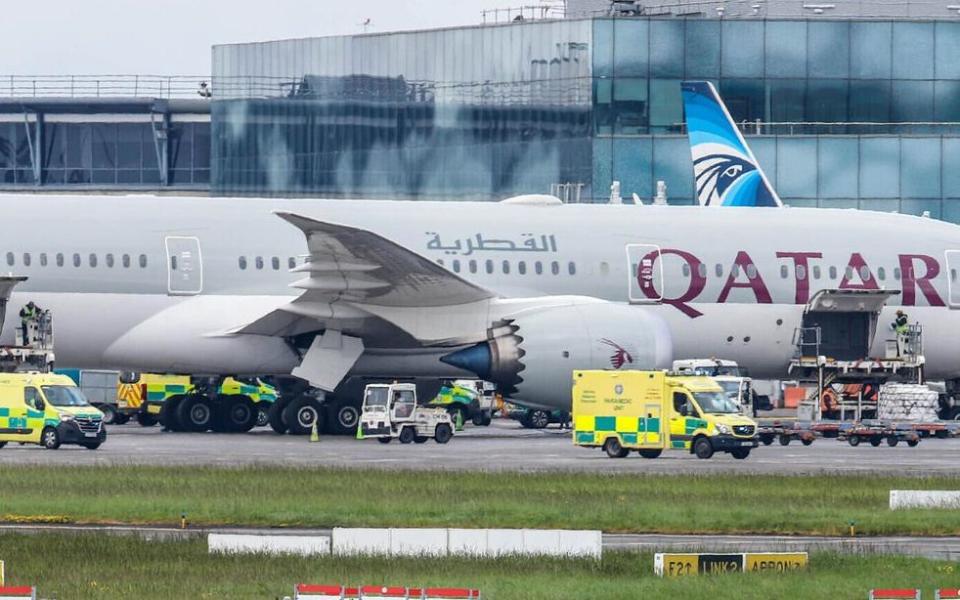Fewer hot meals and no more ‘lap babies’ – how airlines are preparing for a turbulent future

Passengers are being told to sit with fastened seatbelts for longer periods, while fewer meal services and rule changes for young children are on the horizon. Airlines are tightening their in-flight measures to manage the rise of turbulence.
On May 21, one British passenger died of a heart attack and dozens more were injured after a Singapore Airlines flight from Heathrow to Singapore hit severe turbulence in the Irrawaddy Basin in Myanmar. The pilot declared an emergency and diverted to Bangkok.
In the wake of the incident, Singapore Airlines announced it will take a “more cautious approach to managing turbulence”. As well as suspending the hot drink service when the seatbelt sign is on, meal services will be paused. Cabin crew will also be required to return to their seats and secure their seatbelts during bumpy conditions.
Scientists say that turbulence is on the rise due to climate change. Isabel Smith, a turbulence researcher at the University of Reading’s Department of Meteorology, wrote in a 2023 paper: “Clear-air turbulence will increase over time as a result of climate change. This is because the upper atmosphere is warming faster in the tropics, as a result of greenhouse emissions, than in the polar regions.
“This greater difference in temperature between low and high latitudes increases wind shear in the jet streams, the high-level wind currents that blow 10km above our heads where planes fly, which in turn enhances the formation of turbulent patches of air.”
A main challenge for pilots is that clear air turbulence develops when there are no clouds, so is hard to detect. This means turbulence can hit suddenly and without warning.
On May 26, just days after the Singapore Airlines incident, eight people were taken to hospital after a Qatar Airways flight from Doha to Dublin hit turbulence. Qatar Airways said: “A small number of passengers and crew sustained minor injuries in-flight and are now receiving medical attention. The matter is now subject to an internal investigation.”

In addition to the new rules announced by Singapore Airlines, a flight attendant union is lobbying for a ban on children under the age of two travelling on a parent’s lap. Last year the Association of Flight Attendants-CWA union, which represents more than 50,000 flight attendants in the USA, urged legislators to change the rules so that all passengers have their own seats, regardless of their age.
“We’ve seen [planes] go through turbulence recently and drop 4,000 feet in a split second,” a spokesperson for the union told the Washington Post. “The G-forces are not something even the most loving mother or father can guard against and hold their child. It’s just physically impossible.”
Passengers may also notice the seatbelt light illuminated for longer periods than before. As in-flight weather monitoring systems become more sophisticated and communication channels between cockpits improve, pilots are able to share information about flying conditions with nearby planes. This means that passengers are being warned to take their seats preemptively, rather than reactively when turbulence hits. Some also predict that pilots will in the future reroute to avoid rocky jet streams, meaning longer flights and more fuel, coming at a greater cost for the passenger.
Captain Mike Jenvey, a retired Netjets pilot, told The Telegraph that passengers ought to take safety into their own hands and keep their seatbelts fastened at all times.
He said: “[Hitting turbulence] can cause passengers who do not have their seatbelts fastened to rise up very quickly out of their seats and be pushed back in very hard. If walking in the aisle of the aircraft, the sudden rise might cause passengers to hit their heads hard on the cabin ceiling and then fall down.”
Soon, Jenvey’s warnings might be common knowledge for passengers. Anton Radchenko of Airadvisor said: “Most people are unaware of what exactly turbulence is and panic when it happens, which is highly challenging to manage for flight attendants. It makes fellow passengers anxious, leading to chaos and increasing the risk of damage.
“Considering this, airlines should dedicate a five-minute slot (in addition to in-flight safety demonstration) to educating passengers on turbulence before the flight takes off.”
While no other airlines have updated their turbulence regulations following the Singapore Airlines incident, others may follow suit. Damian Devlin, lecturer in aviation at the University of East London, says: “As awareness and understanding of this phenomenon improves, the aviation sector will inevitably seek to minimise the impact through measured technological and procedural innovations.
“The sector will undoubtedly study the adjustments to service made by Singapore Airlines to better understand the influence it has on issues like passenger confidence and passenger compliance with crew instructions.”


